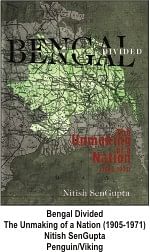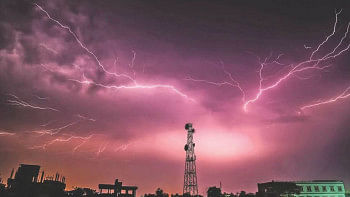The long story of a tortured heritage

There are all the various phases of Bengal you go through as you reflect on its history. And you do that considering the seminal events which have contributed to an upholding of its heritage as well as a breaking down of its geographical unity. If the partition of Bengal in 1905 infuriated the Hindu bhadralok class, it surely offered hope to the poorer, overwhelmingly Muslim population in the eastern part of what was then a province in British colonial India. And then, of course, came the annulment in 1911 of the partition which, for a very large number of people in the province, meant a restoration of history. The wrong perpetrated in 1905, it was argued, needed to be righted. And it was.
Move on, till you arrive at the frenzied moments leading to the division of India itself in 1947. It was fundamentally the period before 1947 that mattered for Bengal. In August 1946, Bengalis across the Hindu-Muslim divide found themselves mired, thanks to the Muslim League call for a Direct Action Day, in communal riots that left thousands dead over a four-day span of time. And yet came the attempt, half-hearted and feeble, from men like Huseyn Shaheed Suhrawardy, Sarat Chandra Bose and Kiron Shankar Roy towards retaining Bengal as an independent entity separate from free India or free (proposed) Pakistan. The suggestion was not bound to work out, for Suhrawardy was one man who had striven, till that point of time, arduously for the creation of Pakistan. Jawaharlal Nehru did not take the idea of an independent Bengal seriously. Nobody did. Not even Mohammad Ali Jinnah, looking forward to Pakistan, however moth-eaten it was to be, gave free Bengal much thought. Perhaps he knew that it would not amount to much.
These are some of the realities that spring from Nitish Sengupta's work. And there are others as well. The subtitle of the book says it all. But then, there arises the question of whether Bengalis were ever a nation in that accepted sense of the meaning. A better explanation would be that whatever nationalistic unity Bengalis entertained in their dealings with one another began to unravel with the death of Deshbandhu Chittaranjan Das in 1925. He was only fifty one when he died. It is reasonable to argue that had he lived, the Bengal Pact he had forged in 1923 might have moved on to creating a greater sense of unity among Bengal's Hindu and Muslim communities. That did not happen and over a period of time Bengal moved in a different direction, or in two distinct directions altogether. The more curious aspect of modern Bengal's history is that it formed no part of the Pakistan plan (the term Pakistan had no space for Bengal) and yet in the weeks and months before the division of India it came to play a pivotal role in the making of Pakistan.
Irony would replace curiosity in the post-1947 circumstances. Having come into the Pakistan structure, the Bengalis of the eastern part of the old province did not take long to comprehend the difficulties that lay before them. With one half of the former cultural whole remaining part of India, this other half quickly discovered that it was going nowhere in the communal dispensation it had got itself into. Islam was no more the glue people thought it would be in Pakistan, where power and all its perquisites were seen to be rapidly gathering in the non-Bengali part of the country. In a large sense, racism --- unspoken and so unacknowledged --- began to take over mindsets in West Pakistan. The culture of the Bengalis, their poverty, indeed their physical appearance turned, at nearly every point in Pakistan's politics, into objects of mockery. In the army, the perception grew, or was made to grow, that Bengalis, being a non-martial race, would not be a healthy addition to the armed forces.
The Bengalis of East Pakistan were thus rendered double victims, first through their wrenching break from what was now Indian West Bengal and, second, through their inability to find a meaningful niche for themselves in Pakistan. The language movement of 1952 was, considering the discrimination Bengalis were beginning to be subjected to in Pakistan, a natural corollary to everything that had gone on earlier. The events of February 1952 were a whole lot more than a movement in defence of the Bengali language. It was a stout defence of the culture that once kept the Bengalis of Pakistan going. And nowhere was this defence, couched as it was in nostalgia, more in evidence than in Sher-e-Bangla's reflections on the indivisibility of Bengali heritage. And he was doing that in 1954, on a visit to Calcutta as chief minister of what would soon be a short-lived United Front ministry in East Bengal. The Pakistanis would roundly excoriate him, to the point of calling him an Indian agent. And Muslim Bengalis obsessed with crafting a Pakistani culture swooped on him as carrion would on a barely alive carcass.
One of the biggest insults to the Bengali in Pakistan came in 1956, when the country's constitution simply seized his numerical majority in the state and reduced him to a level where parity among the provinces became the political norm. Meanwhile, back in West Bengal, after the initial shock of partition, Bengalis found a new centre for themselves. This came about in two ways. In the first place, they cheerfully joined the Indian mainstream and so quickly established a toehold for themselves on the socio-economic stage. In the second, they went full scale into the job of refurbishing such areas as the movie industry, literature and politics in what would become celebrated as substantive Bengali culture. Men like Ajoy Mukherjee, Bidhan Chandra Roy and Jyoti Basu would symbolise the essence of Bengal in what was now a mere, slightly smaller half of old Bengal. And then would come (and this was in the 1960s) the men from a village called Naxalbari. That would be a whole new, albeit horrible, tale altogether.
Sengupta brings the narrative to an end in 1971. That is significant. Perhaps he sees in the birth of Bangladesh the coming into full circle of a tale that ought not to have been there at all in the first place? The unmaking of a nation he calls it, this analysis of Bengal's political decline. But a potent argument, one always made in defence of Bangladesh, is perhaps being ignored here. It is this --- that the emergence of Bangladesh in December 1971 was in effect a reassertion of Bengali national unity. Remember that the Bengalis in this part of former Bengal waged war against Pakistan on the basis of Bengali nationalism.
And where does that leave West Bengal? Politically it is and will likely remain a cog in the wheel of Indian federalism. But culture? That is where the two Bengals, a phrase popularised in the last two decades or so, have kept coming closer, or have been reasserting their old unity. In January 1972, Bangabandhu Sheikh Mujibur Rahman was asked by a newsmen if he envisaged, following the rise of Bangladesh, a reunification of Bengal through bringing the divided halves of the ancient land together. He laughed. And then he proffered this response: "I am happy with my Bangladesh." That about sums up general opinion on the issue, at least for now.
Syed Badrul Ahsan is Editor, Current Affairs, The Daily Star.

 For all latest news, follow The Daily Star's Google News channel.
For all latest news, follow The Daily Star's Google News channel. 



Comments